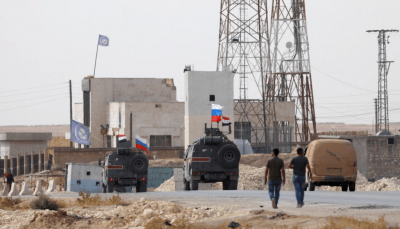Winners and Losers in the Turkish Attack on Kurds in Syria?
Part II

Turkish forces invaded north-east Syria (NES) only when it had coordinated with the US to define the red line of the invasion. Moreover, both superpowers, the US and Russia, protected Turkey by blocking an EU-drafted UN resolution to halt the Turkish advance. Turkey refused to allow the US to arm, train and give an independent state to the Syrian Kurds on the Turkish borders and simultaneously keep Turkey as an ally. President Donald Trump had no choice but to accept Turkish President Recep Tayyip Erdogan’s position over that of the Kurdish separatists. Russia considered the Turkish presence in NES much easier to deal with than the US forces and the disillusionment of the Kurds with their US mentor worth allowing President Erdogan’s operation. So, who is the winner and who is the loser among these players?
Ankara has played one of the most disastrous roles in the Syrian war since the beginning, allowing jihadists to flock into Syria from all over the world. The Turkish position was in harmony with the US-EU directives calling for regime change in Syria or a failed State so that each player could take a chunk of the country and leave it in total chaos. Moreover, Turkey supported the jihadists to attack and successfully occupy the city of Idlib starting from the Turkish borders. It did the same when jihadists attacked Kesseb and threatened the province of Latakia.
However, President Erdogan did pull out his proxies from Aleppo, allowing the Syrian Army to free the northern city with fewer human losses. It also played an effective role in the fall of al-Ghouta, in the suburb of Damascus, to the benefit of the Syrian Army.
President Erdogan also pushed his forces into Jarablus in NES and, two years later, occupied Afrin, disturbing the Syrian Kurds’ dream of a “Rojava” state. His invasion of NES caused the end of Northern Kurdistan and, indirectly, pushed the US forces out of NES, with the exception of a “small footprint” at al-Tanaf.
The Turkish President is today an essential partner in the Astana peace process due to his control over 10% of the Syrian territory and his influence over militants and jihadists. He has also managed to play his cards well by creating a balance between the US and Russia, buying weapons from both despite the discontent and disapproval of the US administration.
Although Turkey failed to deliver on its promise to paralyse, contain and dismantle the jihadist groups in Idlib, it allowed a military expedition against them when the jihadists refused to stop sending armed drones against the Russian military base in Hmaymeem.
Today, President Erdogan will be negotiating a new constitutional framework in Astana, holding Idlib and aiming (hoping) to control almost 14,000 sq km (440×32) of NES. His country is hosting 3.6 million refugees and would like to relocate a few million to Syria. He also needs to satisfy his Syrian proxies, who will accuse him of treachery if he doesn’t offer to these at least the minimum of their required objectives: a reintegration into the Syrian system without persecution for their previous acts, and an approved change in the constitution.
Although President Erdogan was thoroughly in the US-NATO camp at the beginning of the Syrian war and went as far as to shoot down a Russia jet on November 2015, he has managed to strike a balance with Moscow. He is becoming a strategic partner of Russia, not only buying the S-400 but also part of the Gazprom-sponsored pipeline Turkish Stream that is expected to supply Europe with Russian gas. President Erdogan may find himself threatening to leave NATO – to the jubilation of Russia – if the US imposes sanctions on his country and on Turkish personalities.
The Syrian war is not yet over. The role of President Erdogan is still to be played out in its last phase. Is the Turkish presence in Syria to last as long as the occupation of north-east Cyprus? That will definitely indicate a military confrontation with Damascus in the long term and the disapproval of his Russian and Iranian allies.
The Syrian Kurds and the Arab tribes loyal to Damascus will not stand idle in the face of a long Turkish occupation. That will no doubt disturb the relationship between the allies, who need to look for the development of commercial and business relationships at a time when the US is fighting for its hegemony and freely imposing sanctions on so many countries. It all depends on the latest Turkish moves in the Levant, and Turkey will have to choose what to become: a partner or an enemy, and of whom?
*
Note to readers: please click the share buttons above or below. Forward this article to your email lists. Crosspost on your blog site, internet forums. etc.
Featured image is from the author

